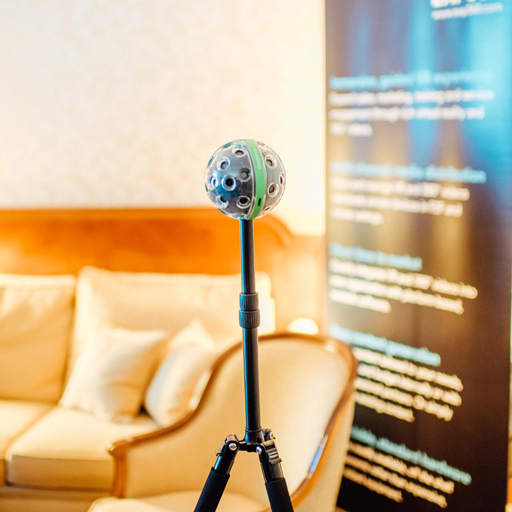Table of Contents
Introduction
With the recent release of the Meta Quest Pro, a 6-DOF mixed reality headset, many people are wondering what the difference is between 3-DOF and 6-DOF VR. Additionally, the abundance of technical details such as FoV (field of view) and DOF (Degrees of Freedom) can be overwhelming, and it's not always clear which factors are most important. In this article, we will explain the differences between 3-DOF and 6-DOF VR experiences, so that you can make an informed decision when choosing a VR experience.
We will begin by defining some key terms and explaining the basics of 3-DOF and 6-DOF VR experiences. We will then discuss the advantages and limitations of both types of experiences, including the cost, immersion, and content options available.
By the end of this article, you will have a better understanding of the differences between 3-DOF and 6-DOF VR experiences, and you will be able to make an informed decision about which type of experience is right for you.
Degrees of freedom
DOF or degrees of freedom refers to the ability on how a user can move in a Virtual Reality (VR) environment. There are two different types of virtual reality: three degrees of freedom (3-DOF) and six degrees of freedom (6-DOF). Both have their own advantages and disadvantages, so it's important to understand the difference between the two.
3-DOF
3 degrees of freedom
mostly known for 360 VR which incorporates 360 video recordings or images and provides the user a stationary perspective of the VR experience.
6-DOF
6 degrees of freedom
provides the ability to move around the environment and interact with objects more realistically.
3-DOF VR experiences - a quick look
In a 3-DOF VR experience, the user is allowed to change their view of the virtual world by moving their head, but they are not able to move their body or physically interact with the virtual environment in any other way.
Facts about 3DoF:
Advantages & limitations of 3-DOF VR experiences:
- 3-DOF VR experiences are typically less expensive than 6-DOF environments because they are cheaper to create and maintain.
- 3-DOF VR experiences are often designed for convenience and portability, making them easy to use.
- However, the limitations of 3-DOF VR experiences mean that they are only capable of delivering 360° content, and are not suitable for real immersive 3D VR experiences.

6-DOF VR experiences - a quick look
6 degrees of freedom is typically defined as the ability to rotate the view left and right, look up and down, tilt the view, move left and right, move forwards and backwards, and move upwards and downwards. This means that a 6-DOF VR experience allows the user to fully immerse themselves in the virtual world and interact with it in a more realistic and intuitive way.
Facts about 6DoF:
Advantages & limitations of 6-DOF VR experiences:
- 6-DOF VR experiences offer a fully immersive and interactive experience, allowing the user to move and interact with the virtual environment in a more realistic and intuitive way.
- However, 6-DOF VR experiences require advanced technology for positional tracking, which makes them more expensive than 3-DOF experiences.
- In addition to being able to deliver immersive VR content, 6-DOF VR experiences are also capable of delivering 360° content. This means that they offer a wider range of content options than 3-DOF experiences.
Use Cases for 3-DOF and 6-DOF
As mentioned earlier, 3-DOF and 360 VR content aims for static environments where the user observes the environment. 6-DOF, on the other hand, provides the ability to move around the environment and can interact with the action 3D environment. But, what are actual use cases 3-DOF and 6-DOF?
Examples of use case for 3-DOF
Virtual Tours
Watching 360° videos and experiencing virtual tours, such as visiting a museum or exploring a city.
Health & Recreation
Using VR apps for relaxation and meditation, such as virtual nature scenes or guided meditation exercises.
Education & Learning
Experiencing learning environments for language learning, science experiments, or historical reenactments.
Examples of use case for 6-DOF
VR Games
Playing VR games that require movement, such as first-person shooters or sports games.
Training Simulations
Training simulations for industries such as healthcare or aviation, where realistic movement and interaction with virtual objects is necessary.
Therapy & Rehabilitation
Virtual reality therapy for rehabilitation, such as physical therapy or exposure therapy.
As mentioned earlier, 3-DOF and 360 VR content aims for static environments where the user observes the environment. 6-DOF, on the other hand, provides the ability to move around the environment and can interact with the action 3D environment. But, what are actual use cases 3-DOF and 6-DOF?
An alternative: 4.5-DOF
The EXP360 VR ecosystem takes the 3-DOF approach as a basis for its VR experiences and combines it with interactive elements and objects. Those objects are called "VR Objects". In the EXP360 VR Objects editor, media files are uploaded and added to the 360 experience. Those objects can be images, videos, audio, texts, buttons, 3D objects, subtitles, etc., With a script language, the different objects can respond to triggers, can be animated and become interactive.
With this method, EXP360 can visualise complex and interactive VR environments that don't require a 3D engine, don't need a big machine and don't take years to build.
Here is an example for this 4.5-DOF approach: With our US-based partner Hi From The Future, we created the Bustle Macys Holiday Hotel, an interactive VR brand environment. It combines 360-degree backgrounds with interactive elements.
Conclusion
In conclusion, understanding the differences between 3-DOF and 6-DOF VR is crucial when considering a VR experience. 3-DOF VR offers cost savings and convenience, but is limited to 360° content. On the other hand, 6-DOF VR offers full immersion and more content options, but is more expensive and requires positional tracking. Each type of VR experience has its own advantages and limitations, and it's important to consider these factors when choosing the right VR experience for you.



